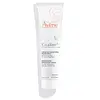What's inside
What's inside
 Key Ingredients
Key Ingredients

 Benefits
Benefits

 Concerns
Concerns

 Ingredients Side-by-side
Ingredients Side-by-side

Butyrospermum Parkii Butter
Skin ConditioningEthoxydiglycol
HumectantSimmondsia Chinensis Seed Oil
EmollientAleurites Moluccanus Seed Oil
Skin ConditioningWater
Skin ConditioningTocopherol
AntioxidantTrehalose
HumectantTerminalia Ferdinandiana Fruit Extract
AntioxidantHydrolyzed Vegetable Protein
Skin ConditioningPhospholipids
Skin ConditioningEpilobium Angustifolium Leaf Extract
Skin ConditioningSphingolipids
EmollientSorbitol
HumectantXanthan Gum
EmulsifyingGlycerin
HumectantLycium Barbarum Fruit Extract
AstringentMalachite Extract
AntioxidantGlucose
HumectantAesculus Hippocastanum Seed Extract
Skin ConditioningPropylene Glycol
HumectantSalvia Officinalis Leaf Extract
CleansingCaprylhydroxamic Acid
Alcohol Denat.
AntimicrobialTussilago Farfara Leaf Extract
AstringentPhenoxyethanol
PreservativeAlgae Extract
EmollientCaprylyl Glycol
EmollientRosmarinus Officinalis Leaf Extract
AntimicrobialChamomilla Recutita Flower Extract
MaskingButylene Glycol
HumectantMelissa Officinalis Leaf Extract
Skin ConditioningCucumis Sativus Extract
Skin ConditioningButyrospermum Parkii Butter, Ethoxydiglycol, Simmondsia Chinensis Seed Oil, Aleurites Moluccanus Seed Oil, Water, Tocopherol, Trehalose, Terminalia Ferdinandiana Fruit Extract, Hydrolyzed Vegetable Protein, Phospholipids, Epilobium Angustifolium Leaf Extract, Sphingolipids, Sorbitol, Xanthan Gum, Glycerin, Lycium Barbarum Fruit Extract, Malachite Extract, Glucose, Aesculus Hippocastanum Seed Extract, Propylene Glycol, Salvia Officinalis Leaf Extract, Caprylhydroxamic Acid, Alcohol Denat., Tussilago Farfara Leaf Extract, Phenoxyethanol, Algae Extract, Caprylyl Glycol, Rosmarinus Officinalis Leaf Extract, Chamomilla Recutita Flower Extract, Butylene Glycol, Melissa Officinalis Leaf Extract, Cucumis Sativus Extract
Water
Skin ConditioningCaprylic/Capric Triglyceride
MaskingParaffinum Liquidum
EmollientGlycerin
HumectantHydrogenated Vegetable Oil
EmollientZinc Oxide
Cosmetic ColorantPropylene Glycol
HumectantPolyglyceryl-2 Sesquiisostearate
EmulsifyingPEG-22/Dodecyl Glycol Copolymer
EmulsifyingAluminum Stearate
Cosmetic ColorantAquaphilus Dolomiae Ferment Filtrate
Skin ConditioningArginine
MaskingBeeswax
Emulsion StabilisingCopper Sulfate
Skin ConditioningMagnesium Stearate
Cosmetic ColorantMicrocrystalline Wax
Emulsion StabilisingTromethamine
BufferingZinc Sulfate
AntimicrobialWater, Caprylic/Capric Triglyceride, Paraffinum Liquidum, Glycerin, Hydrogenated Vegetable Oil, Zinc Oxide, Propylene Glycol, Polyglyceryl-2 Sesquiisostearate, PEG-22/Dodecyl Glycol Copolymer, Aluminum Stearate, Aquaphilus Dolomiae Ferment Filtrate, Arginine, Beeswax, Copper Sulfate, Magnesium Stearate, Microcrystalline Wax, Tromethamine, Zinc Sulfate
 Reviews
Reviews

Ingredients Explained
These ingredients are found in both products.
Ingredients higher up in an ingredient list are typically present in a larger amount.
Glycerin is already naturally found in your skin. It helps moisturize and protect your skin.
A study from 2016 found glycerin to be more effective as a humectant than AHAs and hyaluronic acid.
As a humectant, it helps the skin stay hydrated by pulling moisture to your skin. The low molecular weight of glycerin allows it to pull moisture into the deeper layers of your skin.
Hydrated skin improves your skin barrier; Your skin barrier helps protect against irritants and bacteria.
Glycerin has also been found to have antimicrobial and antiviral properties. Due to these properties, glycerin is often used in wound and burn treatments.
In cosmetics, glycerin is usually derived from plants such as soybean or palm. However, it can also be sourced from animals, such as tallow or animal fat.
This ingredient is organic, colorless, odorless, and non-toxic.
Glycerin is the name for this ingredient in American English. British English uses Glycerol/Glycerine.
Learn more about GlycerinPropylene Glycol is an odorless, colorless liquid. As a humectant, it helps skin retain moisture. It also aids in delivering active ingredients.
Another role of this ingredient is preventing a product from melting or freezing. Propylene glycol also adds antimicrobrial properties to a product, elongating product lifespan.
This ingredient is considered an organic alcohol and commonly added into both cosmetics and foods.
Those with sensitive skin or conditions may develop a rash when using this ingredient.
Learn more about Propylene GlycolWater. It's the most common cosmetic ingredient of all. You'll usually see it at the top of ingredient lists, meaning that it makes up the largest part of the product.
So why is it so popular? Water most often acts as a solvent - this means that it helps dissolve other ingredients into the formulation.
You'll also recognize water as that liquid we all need to stay alive. If you see this, drink a glass of water. Stay hydrated!
Learn more about Water